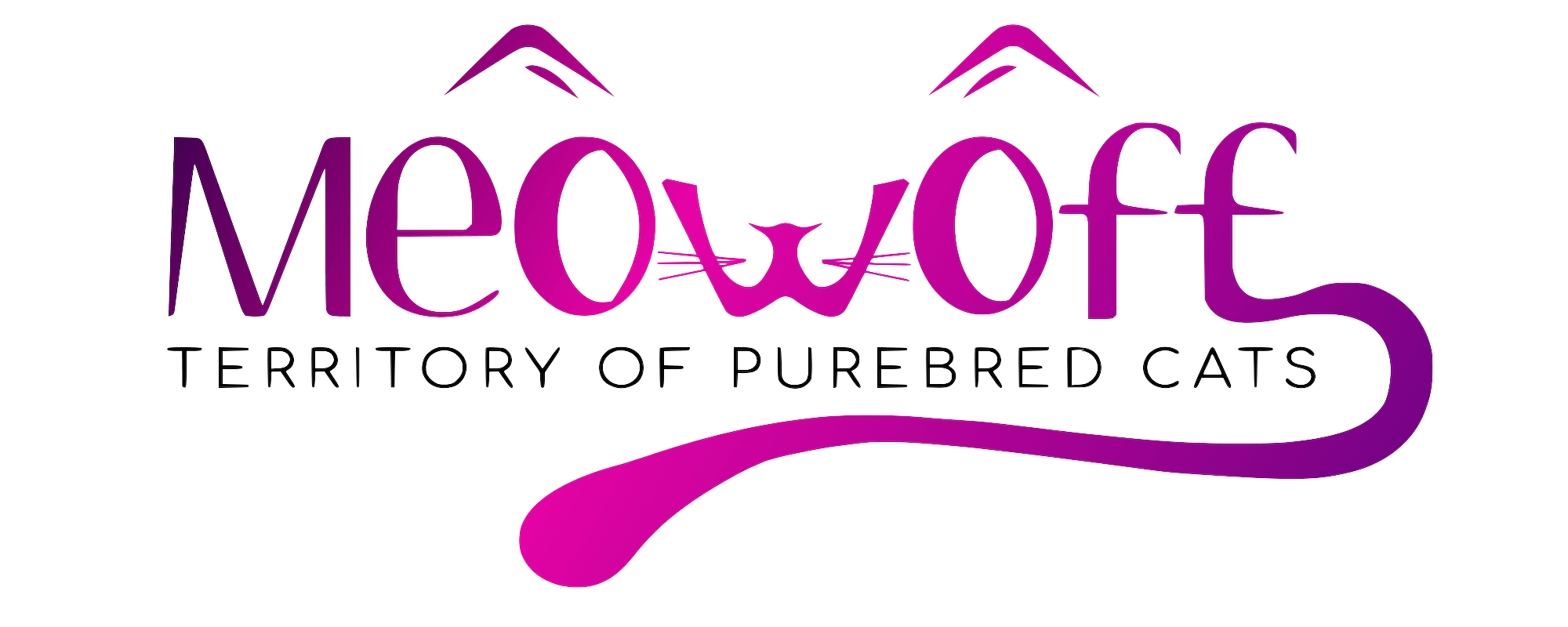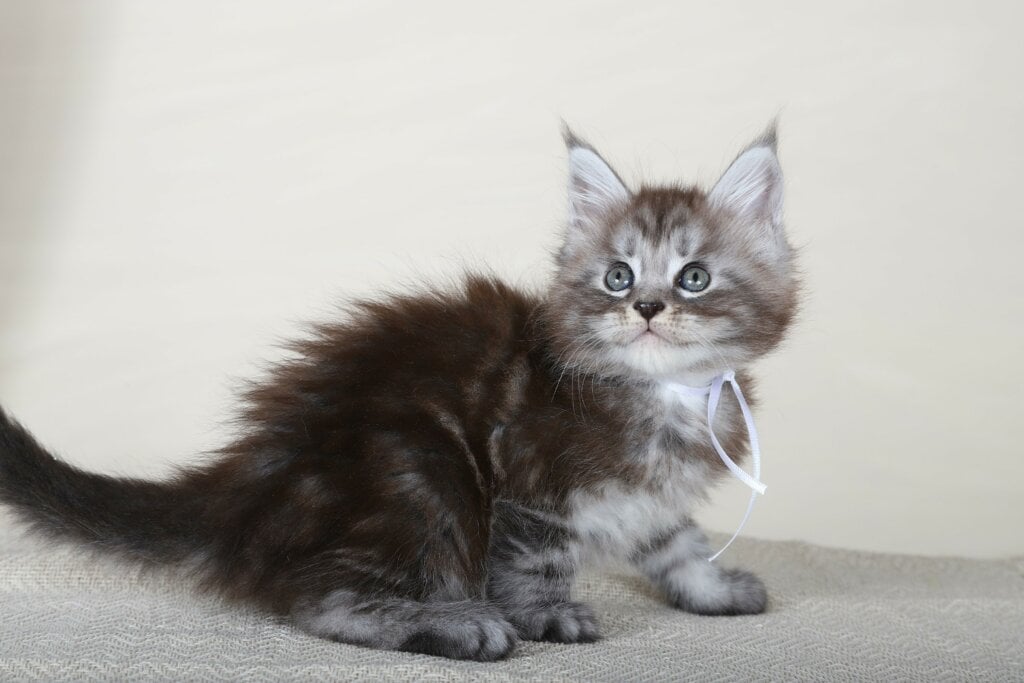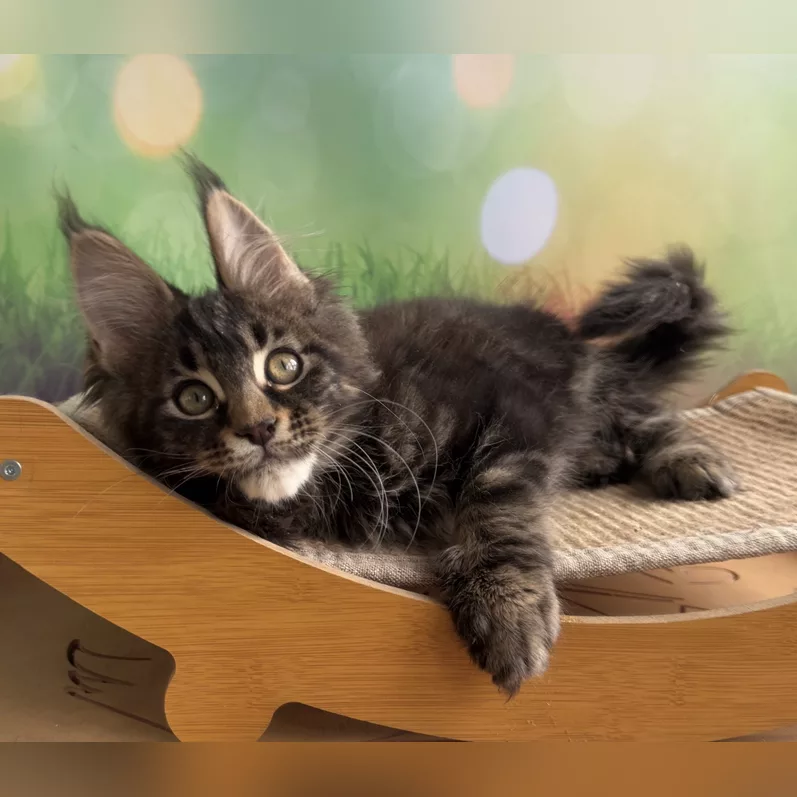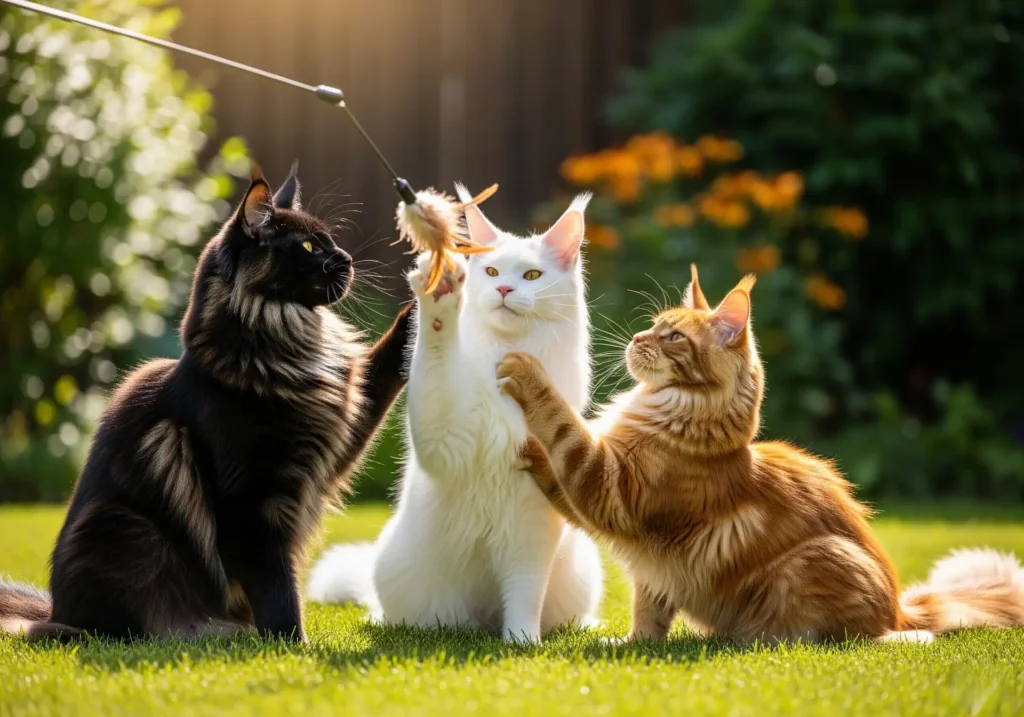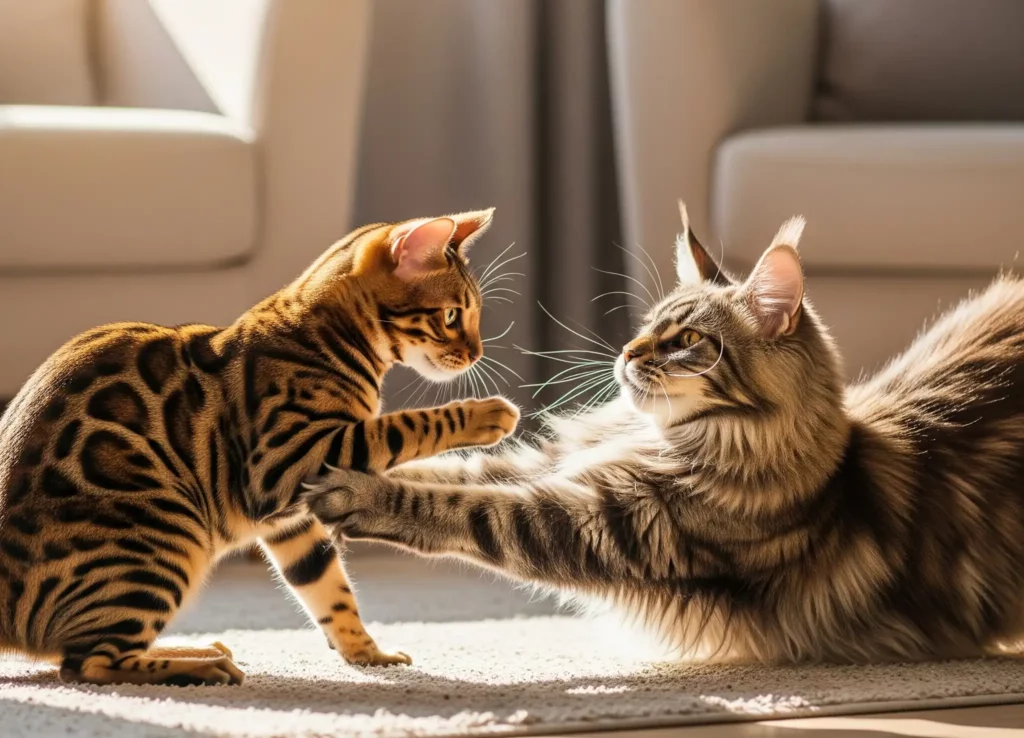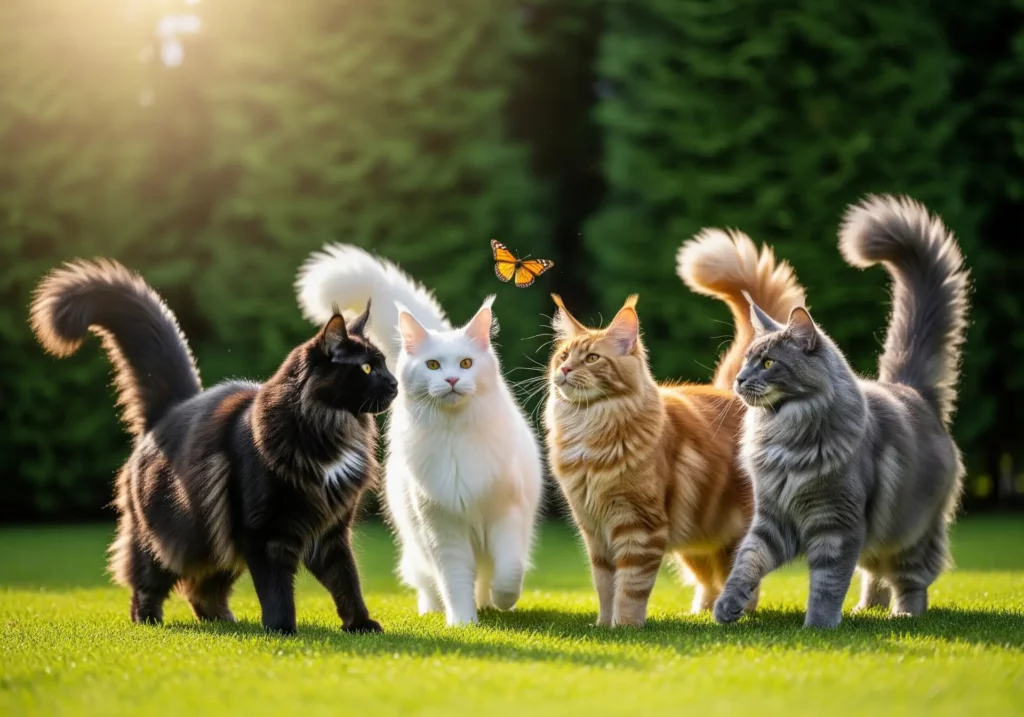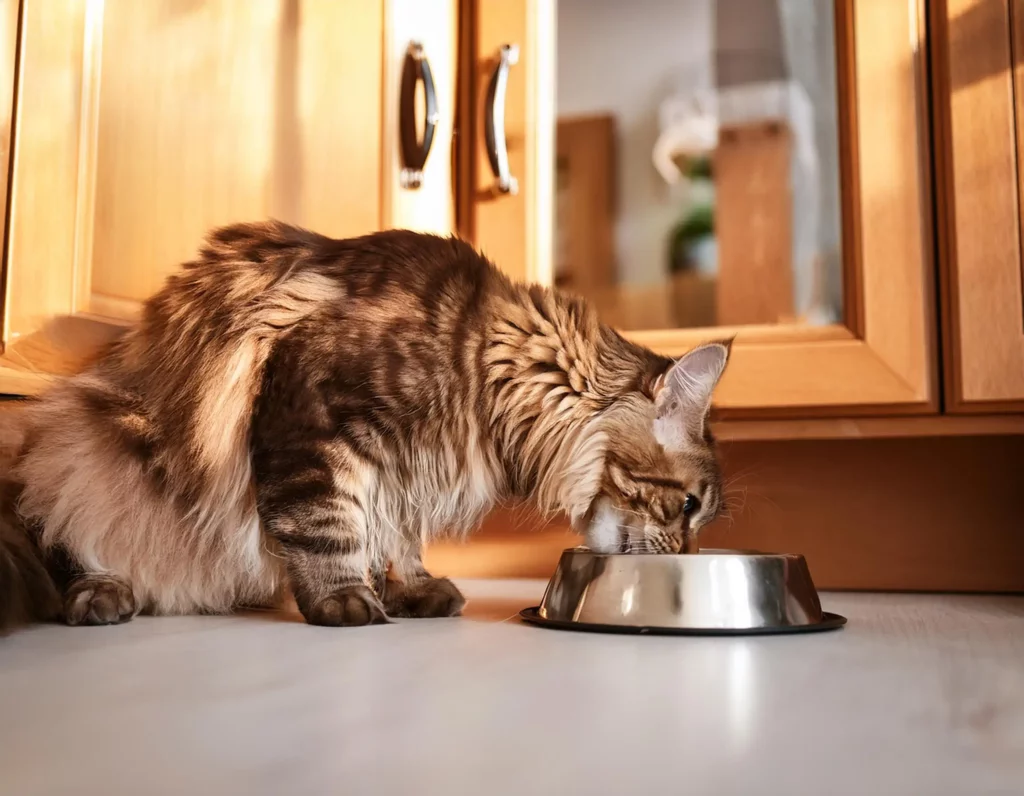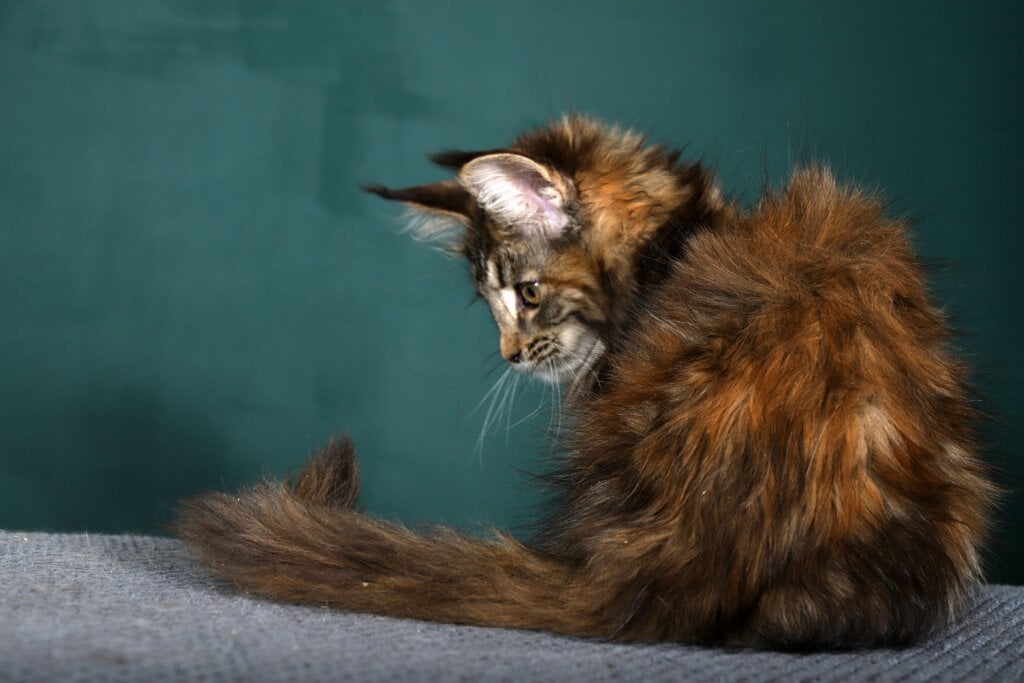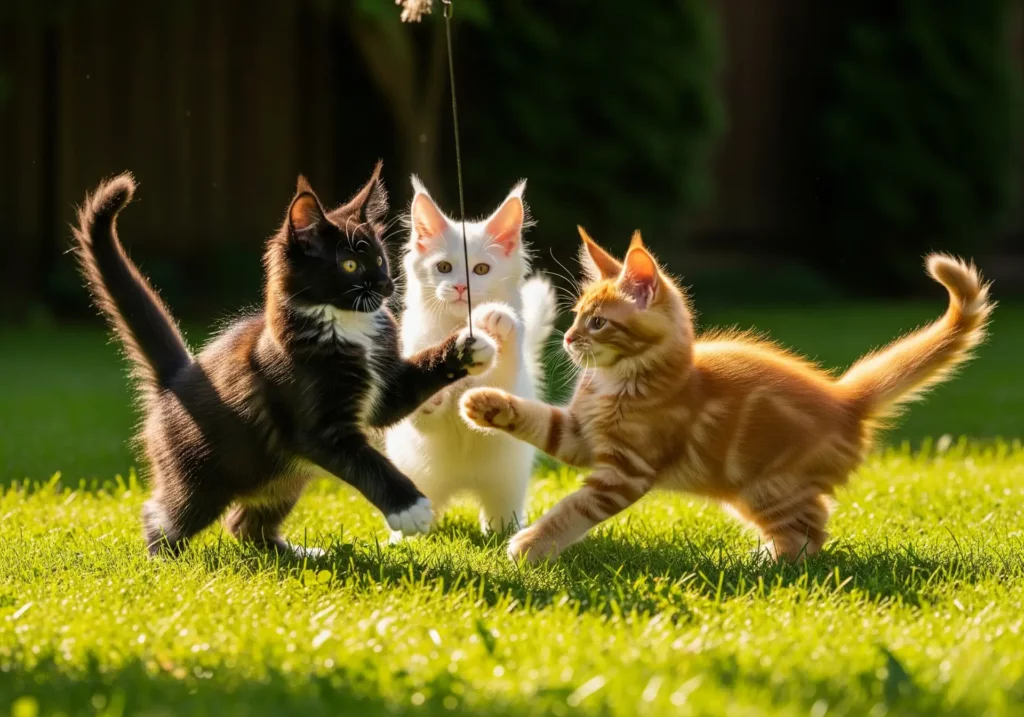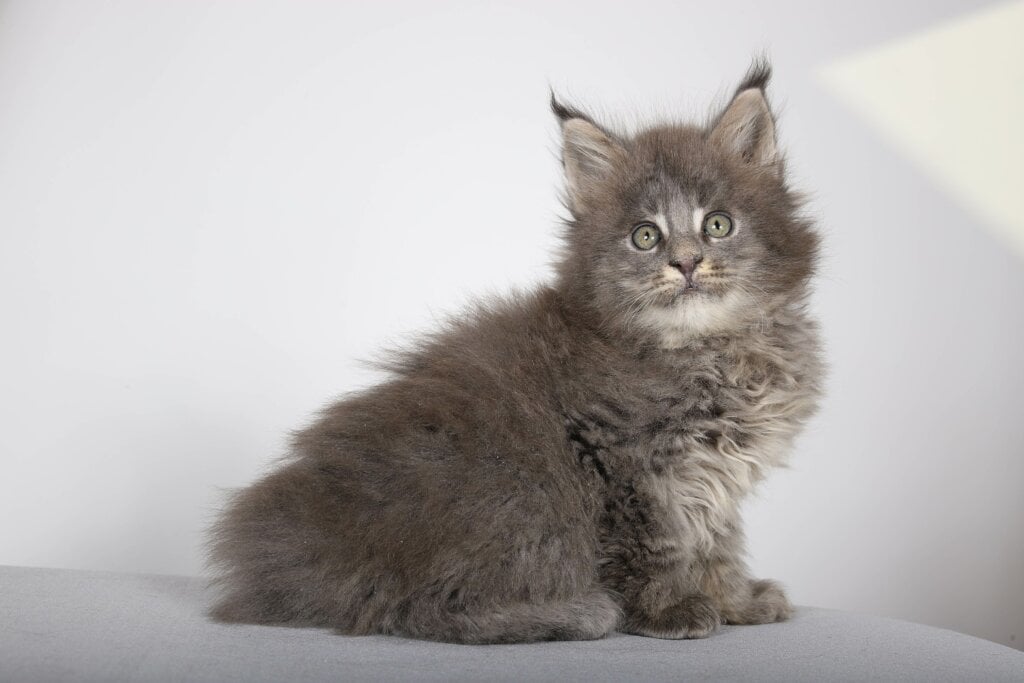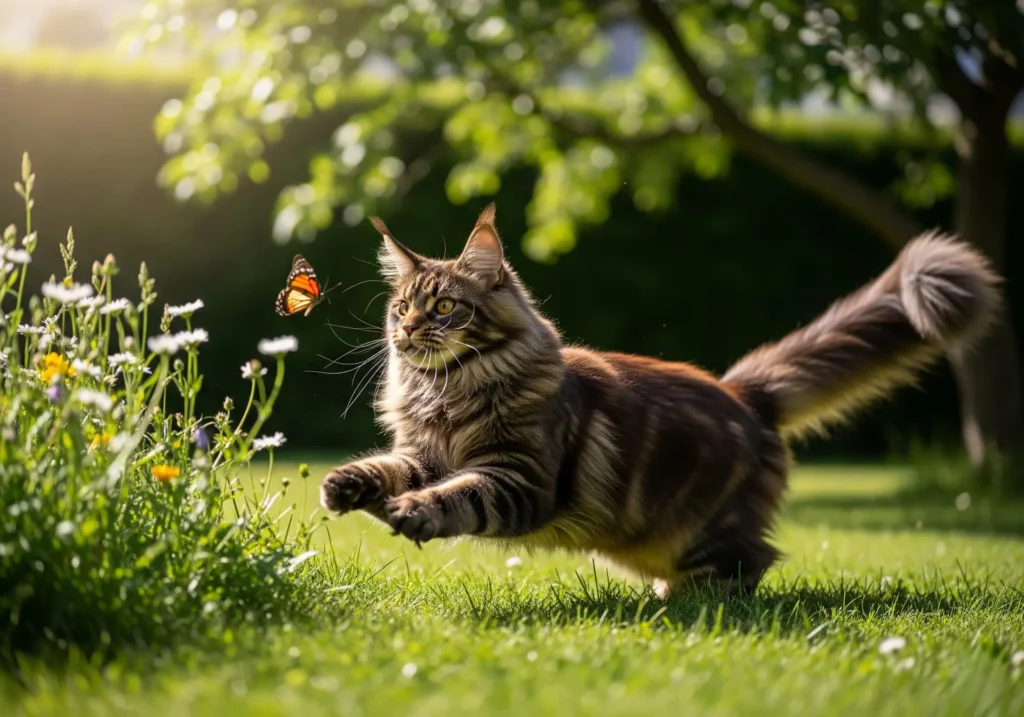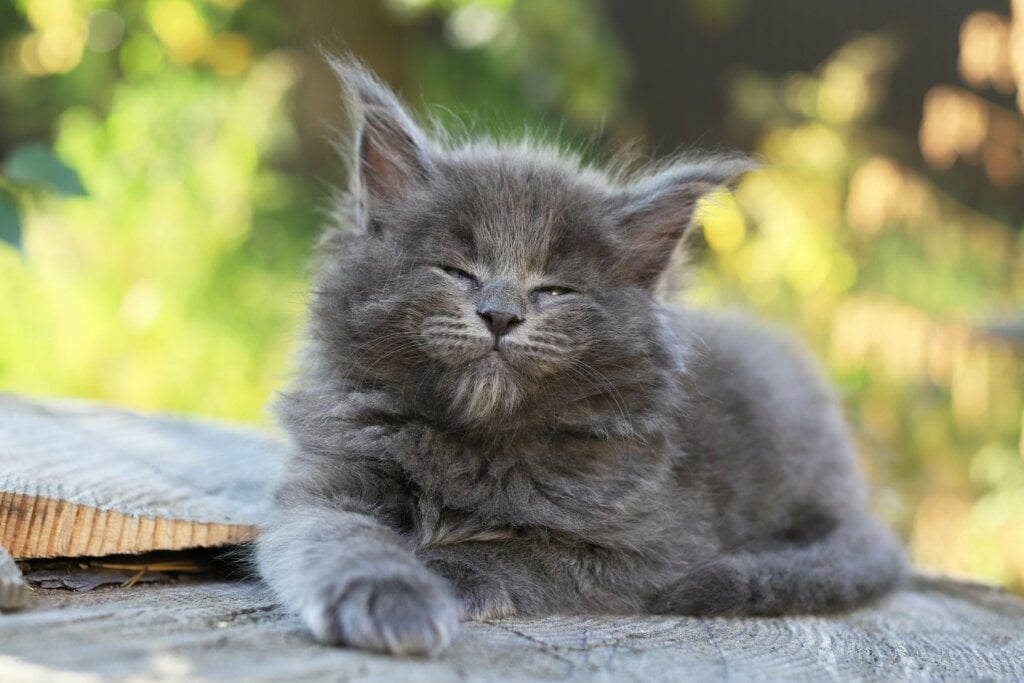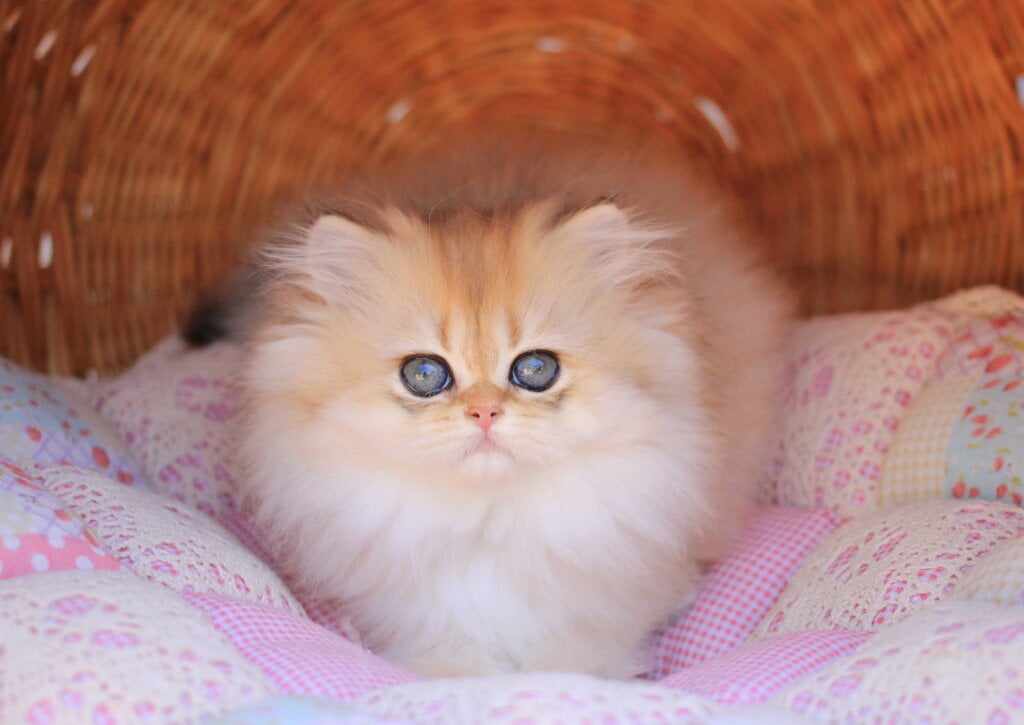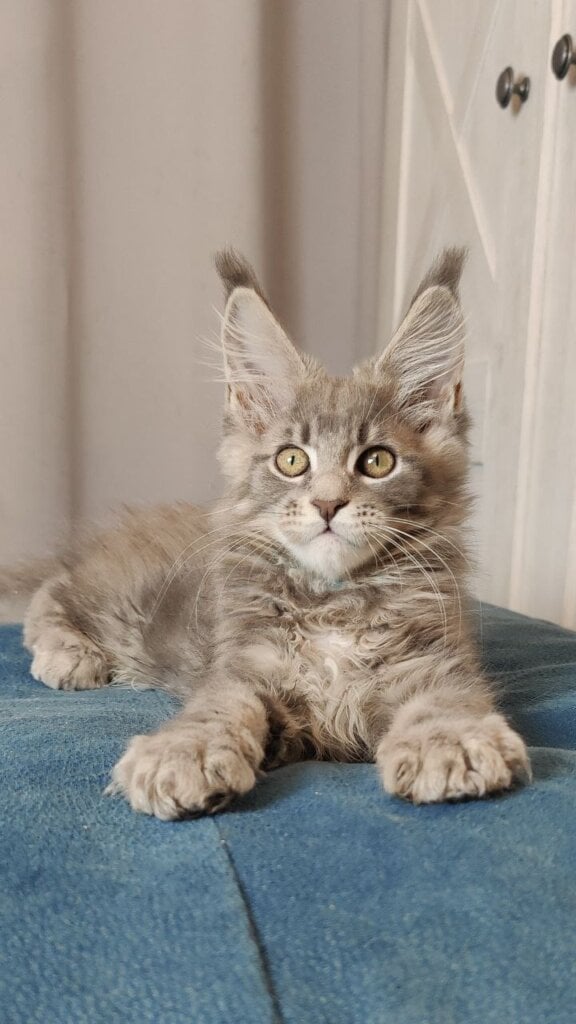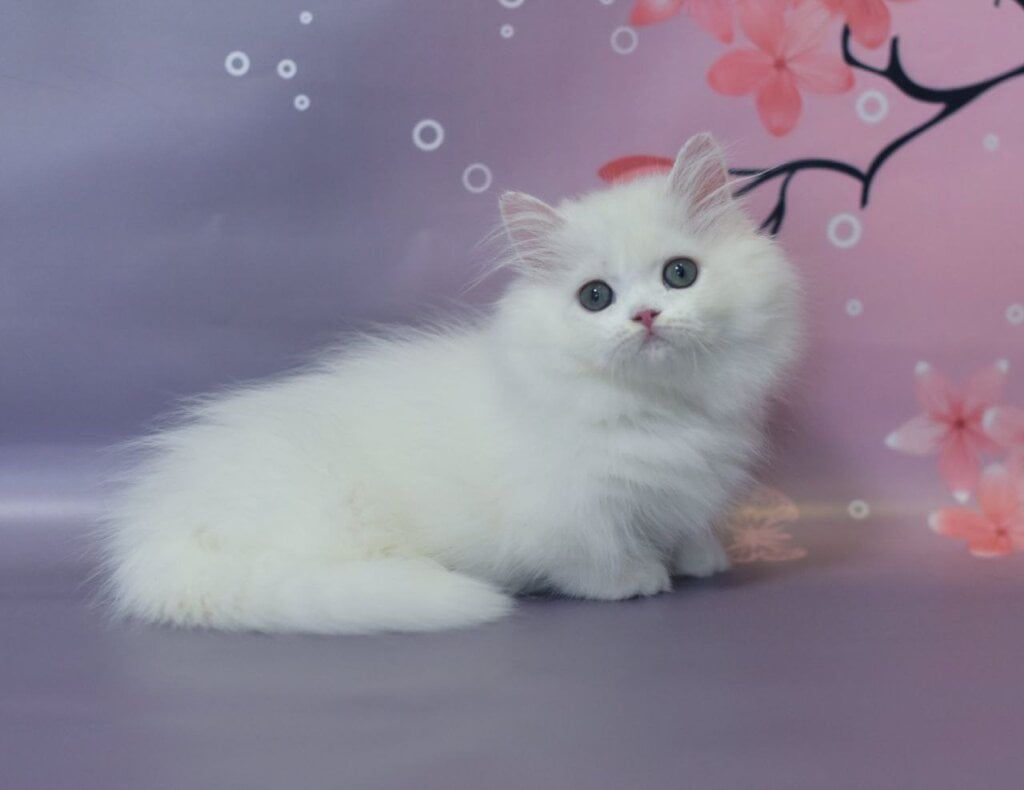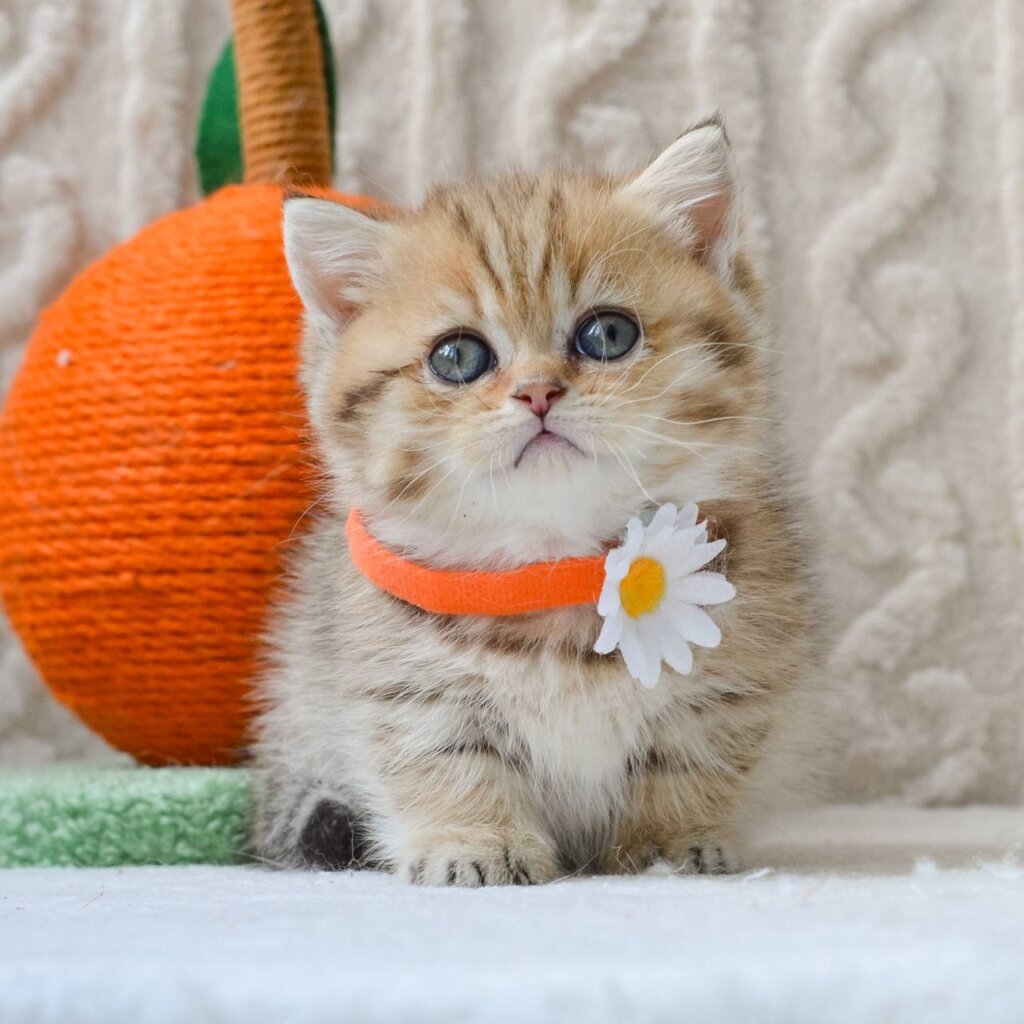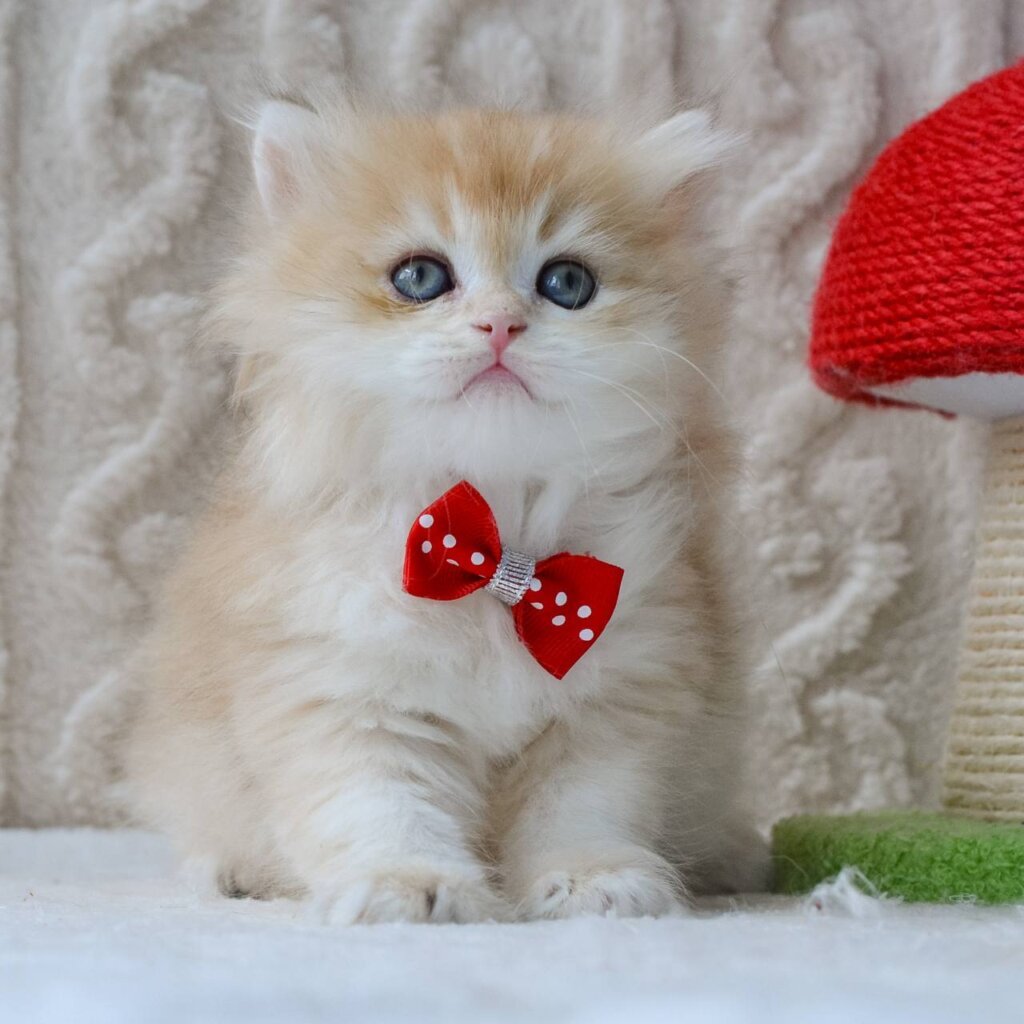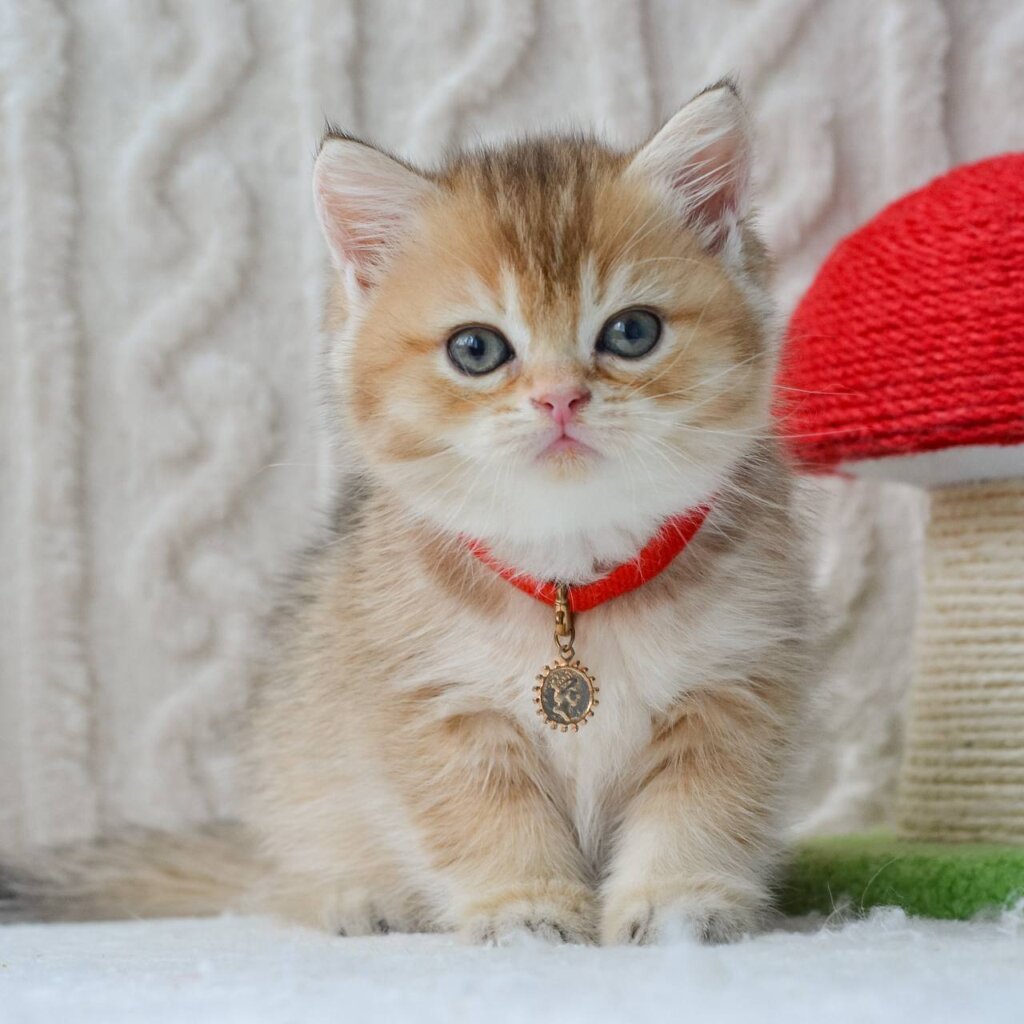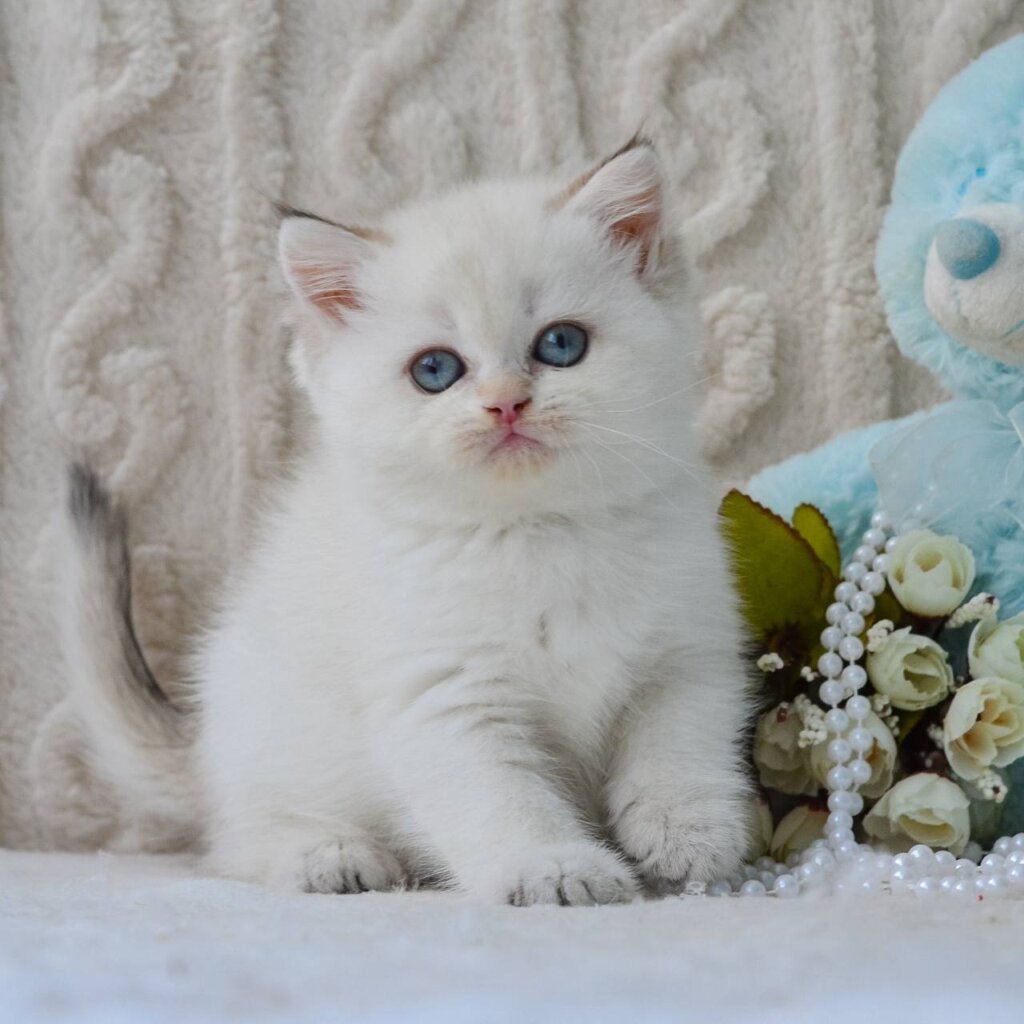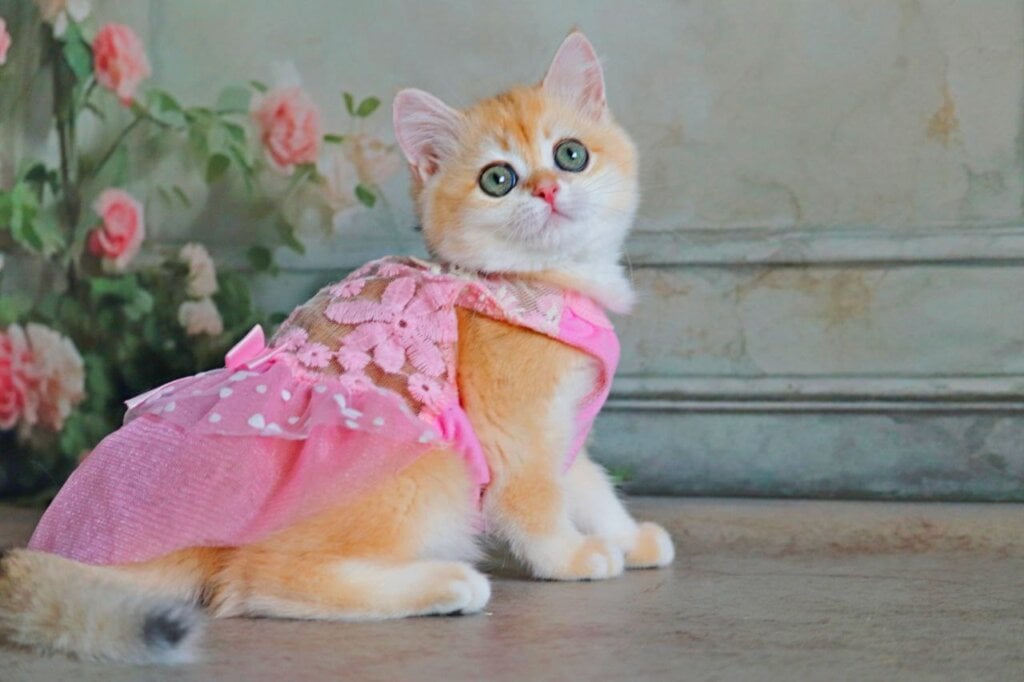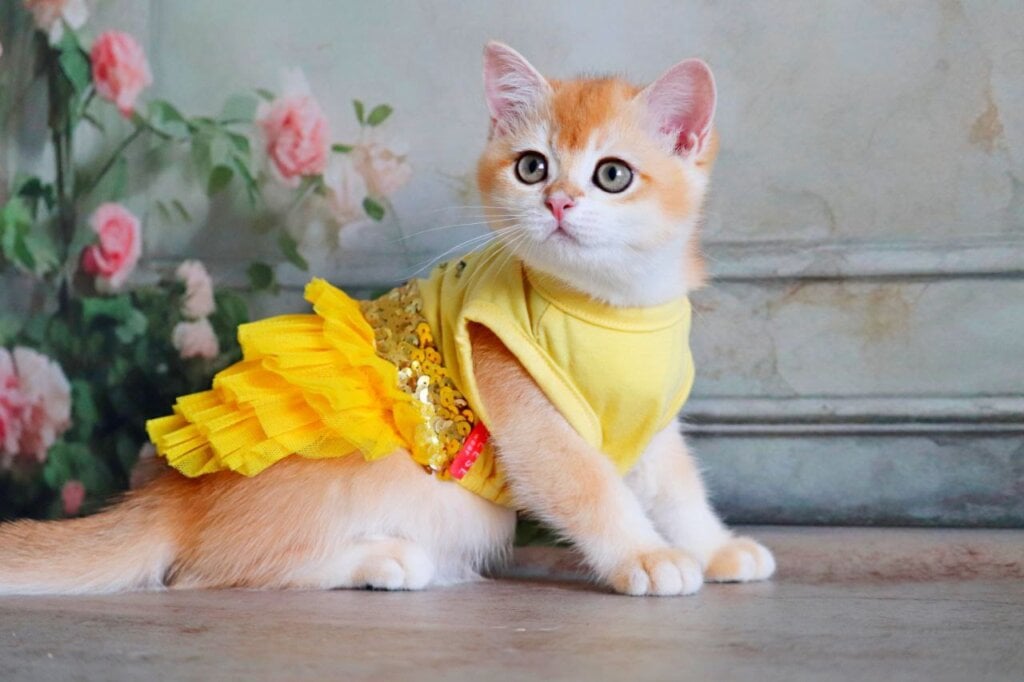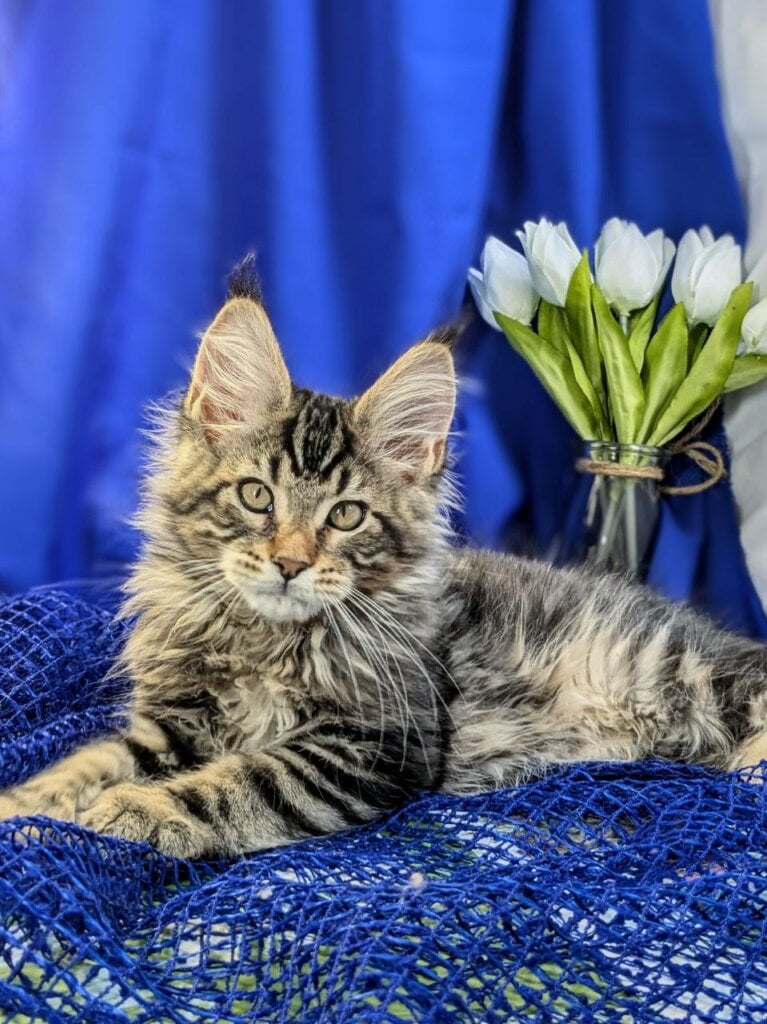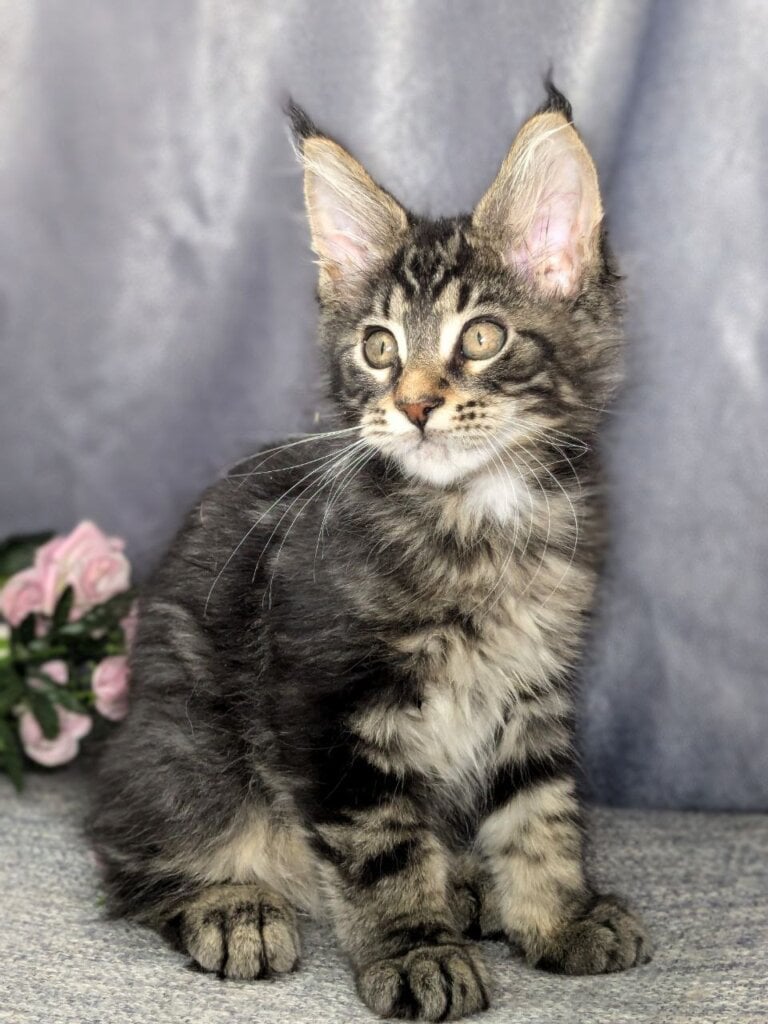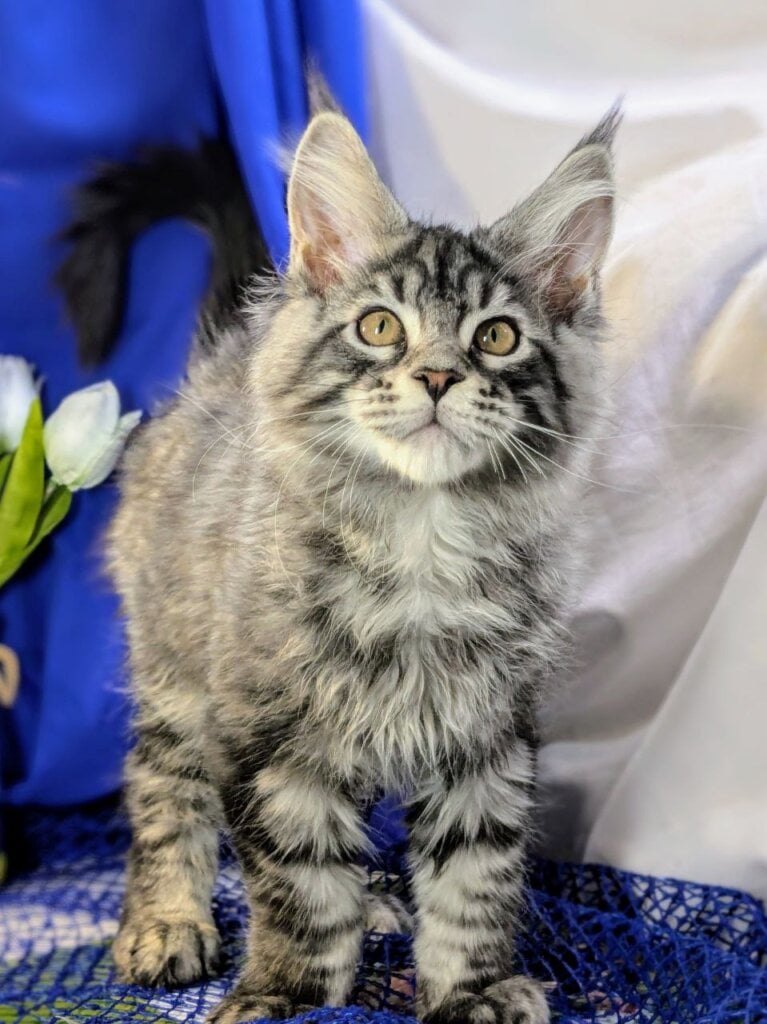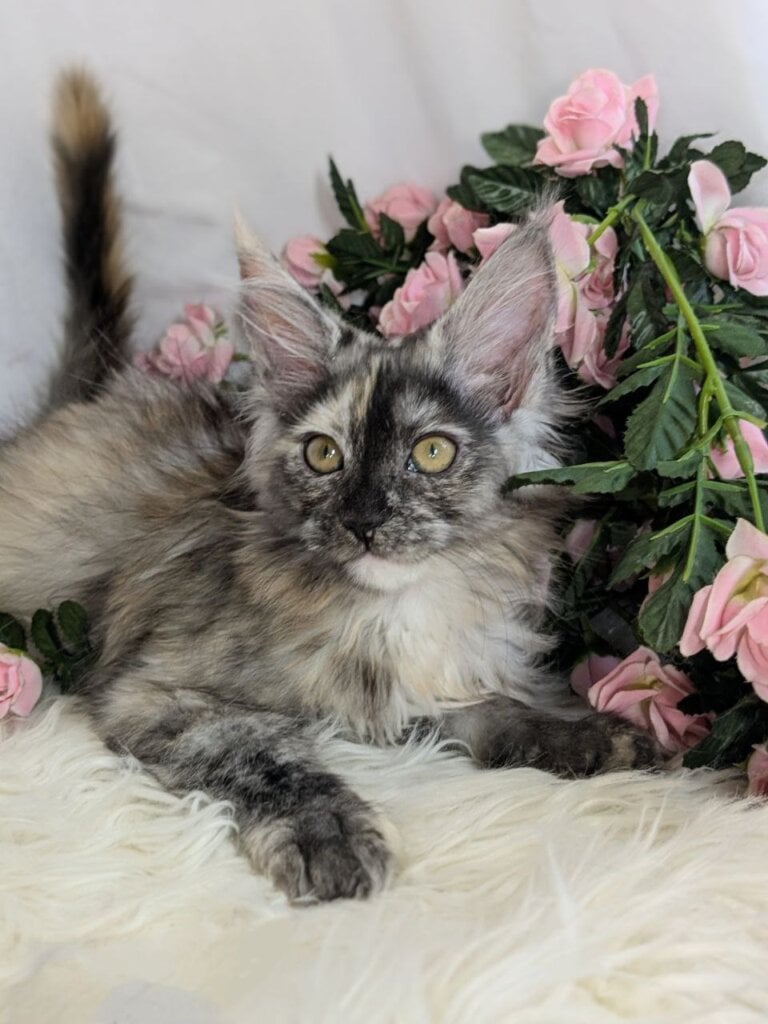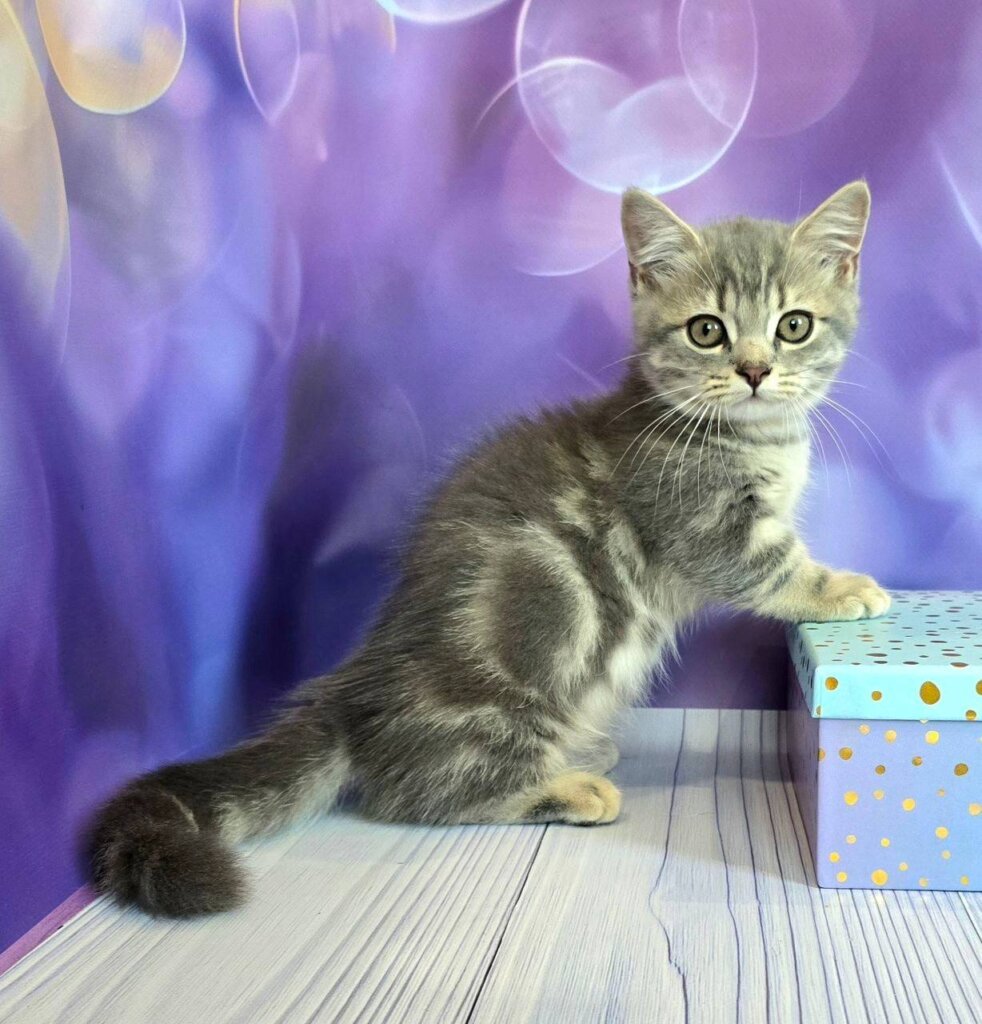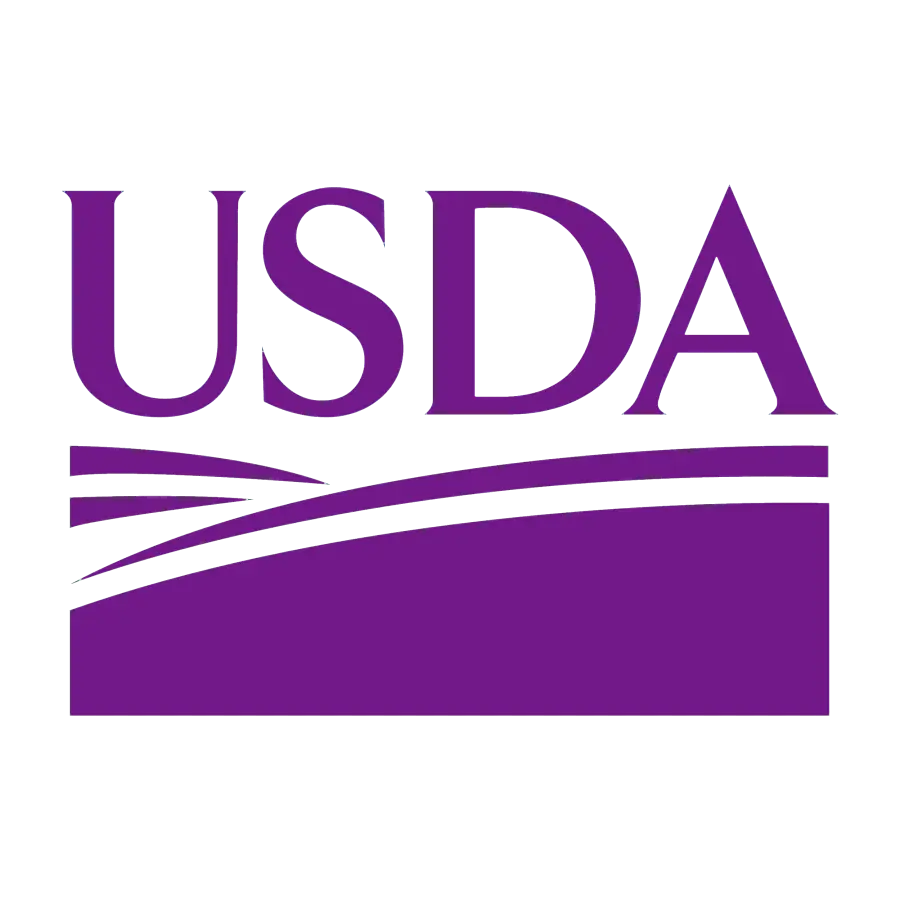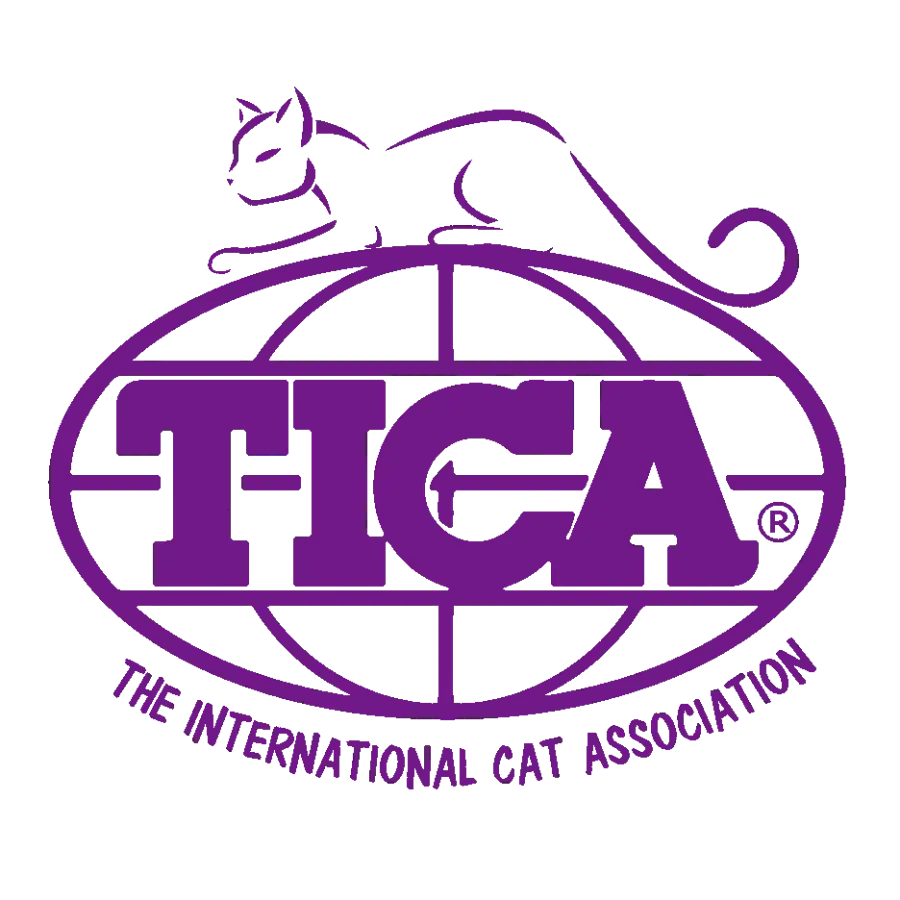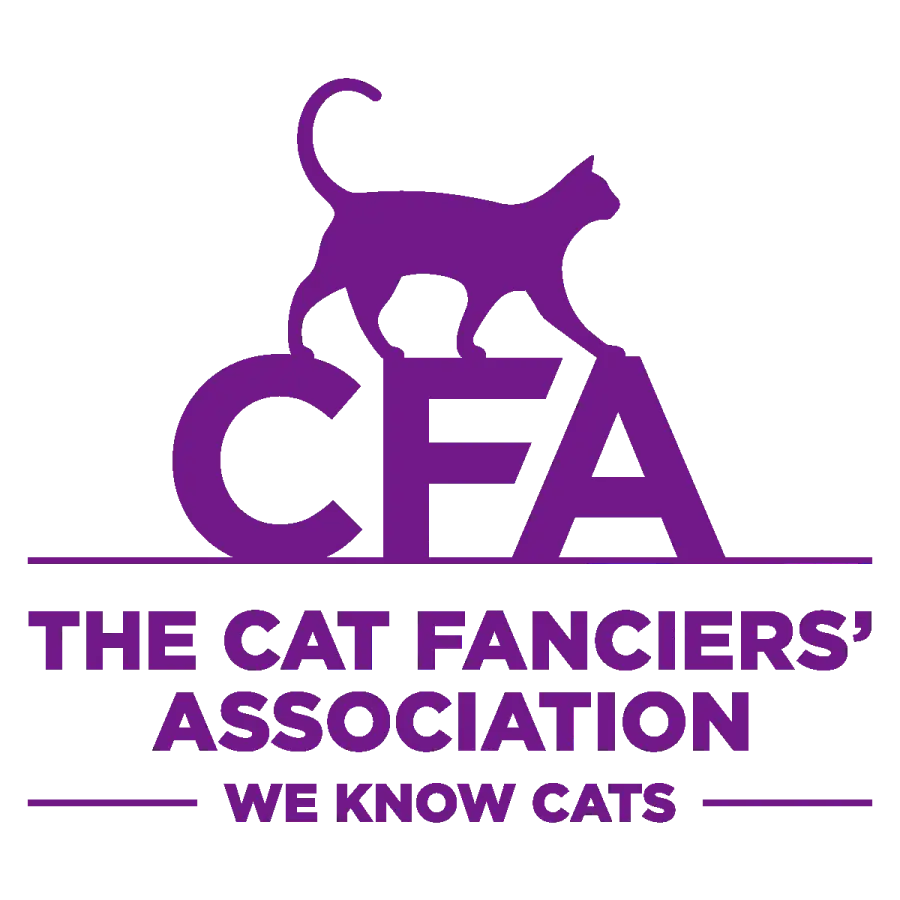What Are Maine Coon Growth Stages?
By better understanding Maine Coon growth stages, we can make better and more informed decisions to help these majestic cats thrive. Maine Coons are famous for their large size and sweet, friendly disposition. Like all felines, they experience specific growth stages, marked by individual traits that require focused care and supervision.
1. Kitten Stage Characteristics
During the kitten stage, Maine Coons go through exponential growth, especially during the initial three months. For most of this stage of development, they double their birth weight every week. These kittens typically double their birth weight by the end of the first week.
Important developmental milestones are opening their eyes, learning to walk, and exploring their environment. A quality nursing diet is important in those first few weeks, because mom is responsible for delivering all of the vital nutrients. Starting them on solid food just a little at a time supports their rapidly growing bodies and prepares them for the next stage.
2. Juvenile Stage Development
Maine Coons grow the fastest between 3 to 6 months. This is the stage that their growth rate slows down some in comparison to their earlier kitten stage. During this juvenile phase, a diet supportive of continued growth and development – high in quality protein and fat – is key.
Pretty soon you’ll see behavioral changes as they start to get more active and more curious. They begin to show social behaviors and learn boundaries with other kittens through play. Keeping them mentally stimulated with the right toys and interactive play is crucial, as these intelligent cats thrive on entertainment and adventure.
3. Adolescent Stage Changes
Between 6 to 12 months, Maine Coons reach adolescence. While growth slows considerably, they continue to put on astounding weight. Adult Maine Coons males typically weigh 18 to 25 pounds while females are about 10 to 15 pounds.
Even as growth slows, nutritional needs are still very high, making balanced diets that foster healthy growth even more important. Behaviorally, adolescents can be more independent and sometimes test limits or push against authority. With regular training and positive reinforcement, these characteristics can be managed and put to good use.
4. Adult Stage Maturity
Maine Coons typically take 3 to 5 years to reach full maturity. Physically, they can reach up to 40 inches in length and 16 inches in height. This size combined with their muscular build gives them the title of one of the largest domestic cat breeds.
The full maturity is characterized by a muscular, well-proportioned body and a majestic appearance. To support their size and health, Maine Coons need a diet rich in high-quality commercial dry or wet food. Of course, exercise – ample space to run and play – is important to help maintain their big strong muscles as well.
5. Senior Stage Signs
From about 7 to 10 years, Maine Coons begin their senior years. Changes in activity levels and health become apparent, often necessitating adaptations in care. Routine veterinary visits are key to catching age-related health problems early.
When their metabolism slows, a decrease in calorie intake is often required, ideally achieved with the guidance of a veterinarian. By making some dietary and lifestyle changes, you can help keep your kitty healthy and happy during his golden years.
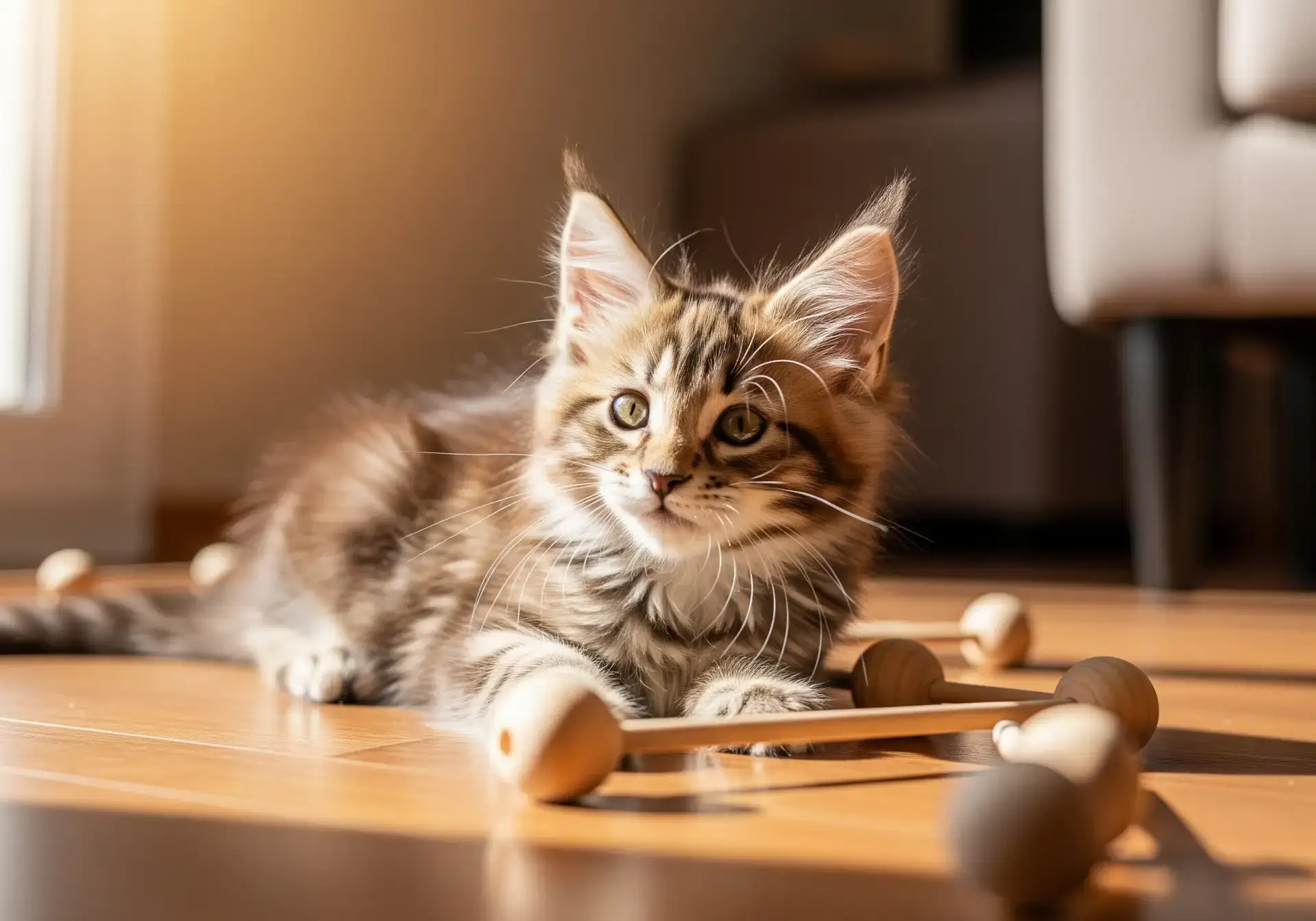
Factors Influencing Maine Coon Growth
To fully grasp the growth stages of Maine Coons is to consider a few key elements first, chiefly factors such as genetics, surroundings and nourishment. These are some of the crucial factors that affect Maine Coons growth and overall wellbeing.
Genetic Influences on Size
Genetics will heavily influence a Maine Coon’s final size. This is one huge breed of cat. Males are the larger of the two, weighing up to 25 pounds, with females standing in the 10- to 15-pound range.
Of course, specific genetic traits play a big part in this impressive stature. For example, genetic factors affect bone structure and muscle mass, providing Maine Coons with their signature robust build.
Breeding practices play a major role in size. Reputable breeders have a strong focus on the Maine Coon’s desirable qualities – including its size and health. This careful process is what helps these amazing qualities be passed on to future generations.
With responsible breeding, the risk of genetic health issues is greatly reduced. For instance, hip dysplasia can be diagnosed in dogs as young as three months and as old as five years. This condition also shows the importance of the genetic selection process.
It prevents her from getting too big and unhealthy, maintaining the breed’s general size and health.
Environmental Impact on Growth
The quality of care and maintenance a Maine Coon receives plays a huge role in how well it grows. A large, rich environment filled with mental and physical opportunities is key to healthy growth.
Maine Coons are happy in environments where they can investigate and be their big, naughty selves. Daily play sessions help tap into their inner hunters and explorers.
These things are essential for their physical development, their muscular development and their mental health. Stressors, like loud environments or overcrowding, can affect growth rates.
A safe, stimulating environment is essential for healthy growth and development. Another environmental factor that plays a role on growth is regular grooming.
It stops matting and hairballs, which can lead to pain and intestinal problems. By providing a low-stress and stimulating environment, owners can help their Maine Coon thrive during their growth period.
Role of Nutrition in Development
Proper nutrition is critical to ensure Maine Coons grow properly. Maine coon kittens require a high protein, high-fat diet to grow and develop as quickly as they should.
These nutrients are essential for bone development, muscle growth, and overall health. Make sure their diet includes essential nutrients such as taurine, omega fatty acids, and vitamins.
This will make sure they grow to their fullest potential. Whatever the Maine Coon’s growth rate, proper feeding practices will help them thrive for years to come.
With specially formulated, nutritious cat food for Maine Coons, you can help keep them healthy and hearty. This unique diet caters to their slower growth rate that lasts three to five years.
Nutritional deficiencies will lead to serious health issues. This is why it’s so important to talk to your veterinarian about developing a diet that will help your Maine Coon thrive.
That’s why it’s so important to deliver the appropriate nutrients at each phase of their growth. This encouragement allows them to flourish in their own quirky way.
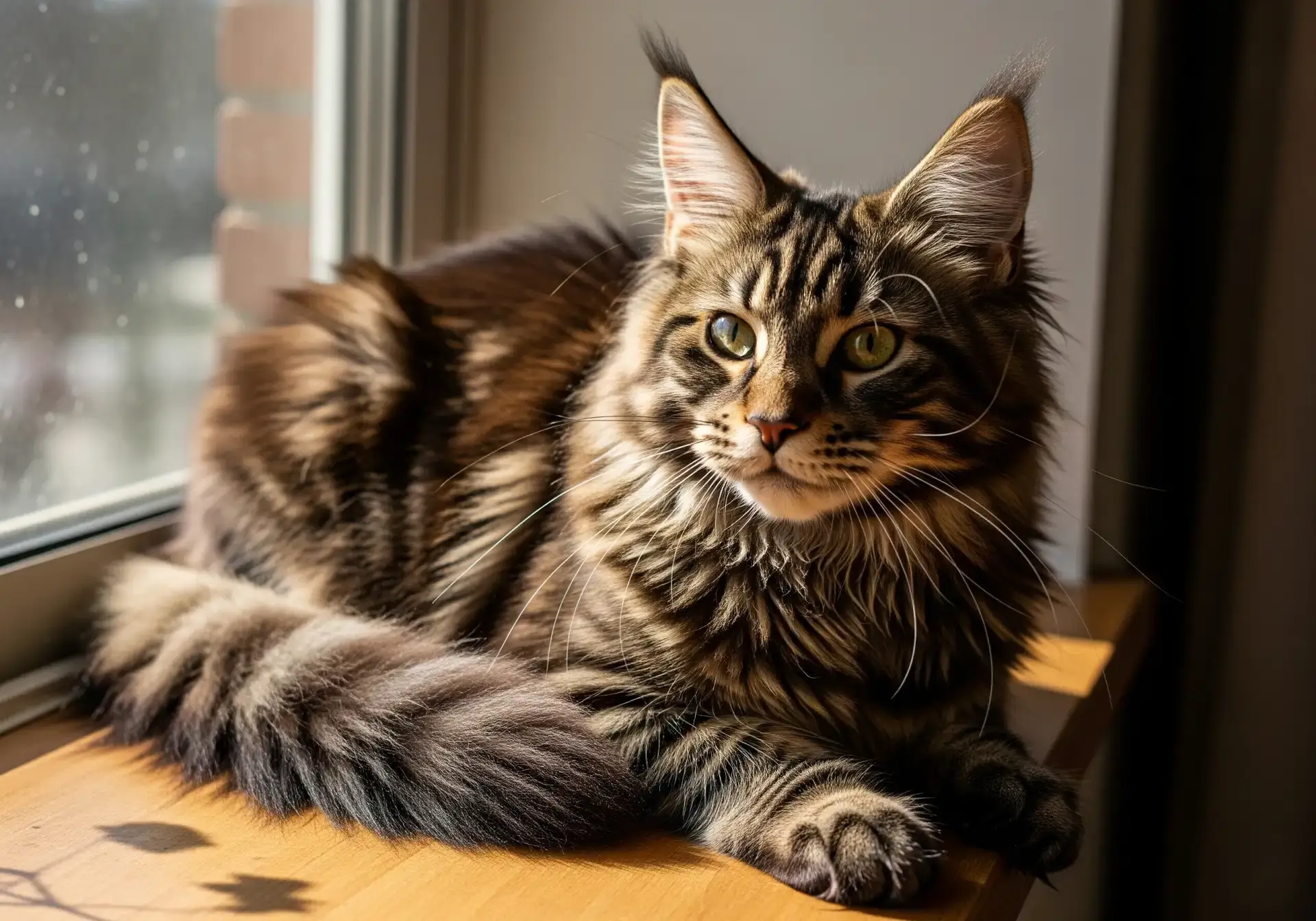
How to Support Healthy Growth
Supporting the healthy growth of a Maine Coon involves a blend of proper nutrition, regular exercise, and keen monitoring of their development. These gentle giants are a big responsibility with special needs. When you do that, they blossom and grow into the best versions of themselves – mentally and physically.
Here’s how you can support their journey:
- Choose high-quality cat food tailored for large breeds.
- Ensure a diet rich in proteins and healthy fats.
- Schedule regular vet visits for health check-ups.
- Provide daily exercise and playtime to stimulate growth.
- Create a stimulating environment for mental challenges.
Ideal Diet for Maine Coons
A balanced diet is important for Maine Coons, particularly when they’re in their developmental stages. They require a protein-rich diet – 30-40% protein is best – to promote muscle development. Moreover, they need to keep fat intake balanced, under 20%, to get energy without the danger of obesity.
Moderate inclusion of carbohydrates is important for a balanced energy source. Wet food also offers beneficial hydration in addition to being generally more palatable. Dry kibble is easy and promotes oral care.
A combination of the two offers more diversity and helps meet a wider variety of nutritional needs. Avoid cat foods that have fillers like corn, wheat, or soy. Opt for premium ingredients that are rich in the nutrients your growing cat needs.
Choose brands that use high-quality, natural, whole ingredients to help support your Maine Coon’s healthy growth and development.
Importance of Regular Exercise
Regular exercise plays an important part in keeping your Maine Coon healthy and helping them grow. Not only does it help maintain their overall physical condition, it helps ward off obesity, a major issue in larger breeds.
Keep them busy with toys that stimulate their mind and body, such as climbing trees, interactive toys, and laser pointers that help recreate their hunting behavior. These activities keep them active both mentally and physically, establishing a healthy foundation at an early age.
Without sufficient exercise, Maine Coons may become overweight, leading to health issues like joint problems, including the risk of hip dysplasia, which they are prone to. Keeping them active prevents weight gain and joint pain, which can make them less agile, which keeps them happier and healthier.
Monitoring Weight and Size
Monitoring your Maine Coon’s weight and size is important to make sure they’re growing appropriately. Here’s how you can do it effectively:
- Weigh your cat regularly, ideally once a month.
- Measure their overall length from nose to tail, and height at the shoulder.
- Use a growth chart to measure progress toward achieving expected milestones.
- Talk to your veterinarian if you see any concerning changes.
Frequent weigh-ins help catch any growth problems and address them before it’s too late. Maine Coons grow slowly, usually not reaching their full size until about four years of age.
During their formative years, it is essential to keep large breed pups at a healthy weight to prevent excess stress on their growing joints and muscles. At 2-3 months, average weight milestones are 8.8-13.2 lbs.
By 6-9 months, weights jump to 17.6 to 19.8 lbs, and by five years, adult weights are 17.6 to 24.9 lbs for males and 11 to 14.3 lbs for females.
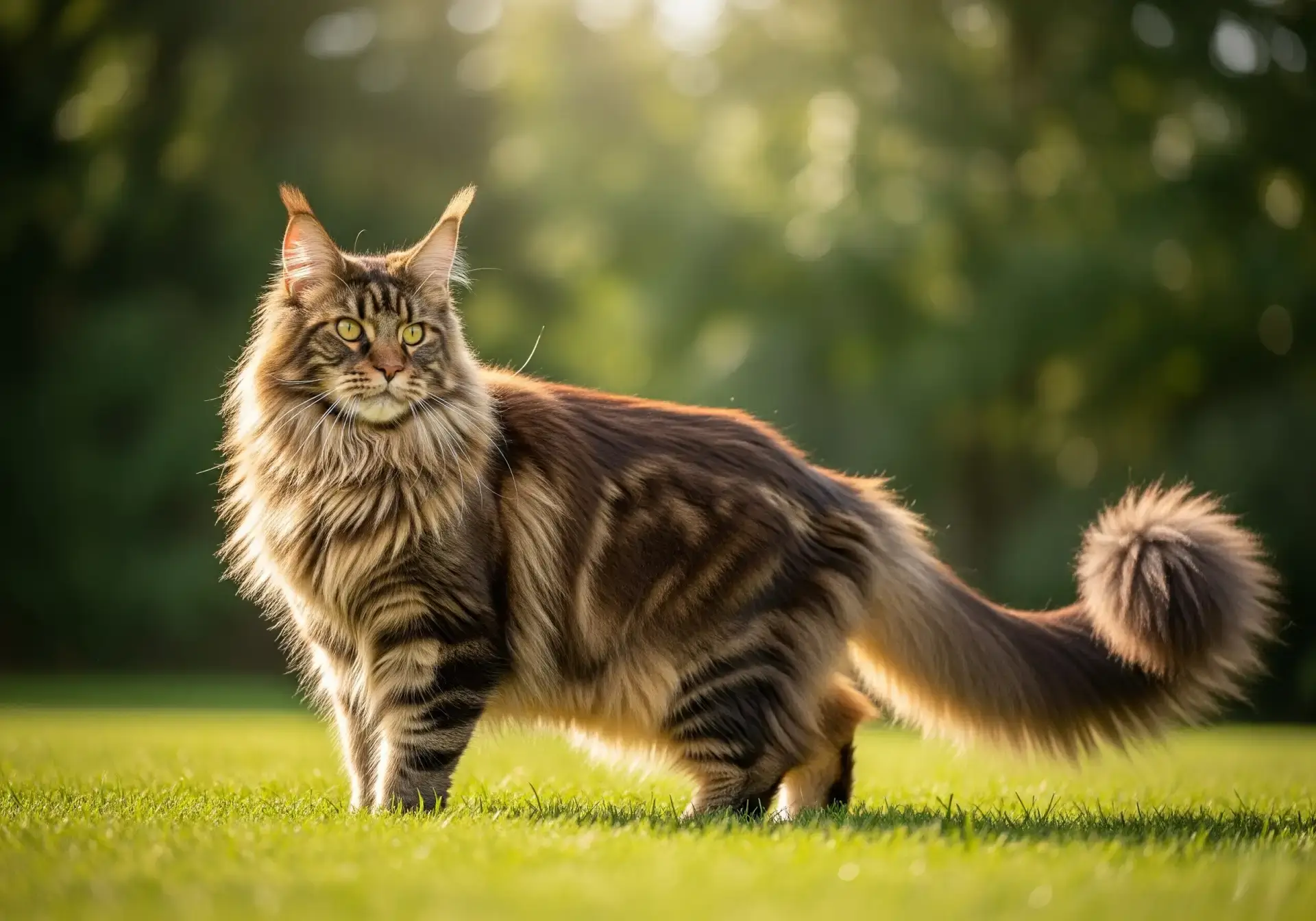
Maintaining a Maine Coon Growth Chart
Tracking your Maine Coon’s growth with a chart has some significant advantages. It’s useful for tracking their growth as a whole, giving you a better understanding of their weight and size fluctuations over time. Using this detailed chart, you can monitor your cat’s growth and make sure it stays healthy.
It just makes sure that they are growing at a healthy rate. If your adult male Maine Coon is in the neighborhood of 20 lbs, you’re right on target with this breed. For context, an average cat typically weighs around 10 lbs. Keeping this chart updated on a weekly basis will help you identify patterns and irregularities in your kitten’s growth.
Considering Maine Coons’ unique growth patterns, this practice is imperative. Providing this information to your veterinarian improves health evaluations, preventing possible problems before they occur.
How to Measure Your Cat Accurately
To accurately measure your Maine Coon, you need the right tools and methods:
- A digital scale for precise weight measurement
- A tape measure for length and height
- A notebook or digital app for recording measurements
Here’s a step-by-step guide to measuring your cat:
- Place the digital scale on a flat surface. Carefully cradle your cat and stand on the scale. Make a note of the total weight. Then step on the scale without your cat and subtract your weight from the total to get your cat’s weight.
- Length: Use a tape measure to measure from the tip of your cat’s nose to the base of their tail.
- Height: Measure from the top of the head to the ground while your cat is standing.
The most important thing is to be consistent. Weigh at the same time each day, with the same type of conditions, to provide the best consistent measurement.
Tracking Growth Over Time
Keeping a Maine Coon growth chart is incredibly important during the early stages of their life. It’s useful for recognizing that special growth stages they experience. Here are key growth indicators to track:
- Update the chart frequently to reflect any large jumps in weight.
- Pay attention to changes in activity levels or eating habits, which can indicate health problems.
Consistent maintenance of the growth chart is important. Because Maine Coons grow more slowly than other cats, their food intake should be carefully monitored and adjusted as needed.
Provide your Maine Coon with quality kitten formula until they turn 1 year old. You can find this readily available on sites like Amazon to promote their healthy development.
Identifying Signs of Overweight
So understanding how to tell if your Maine Coon is overweight is key. Common signs are trouble grooming, lack of mobility, and fatty lumps. Obesity can lead to a host of health problems, including diabetes and joint issues, particularly in larger breeds such as Maine Coons.
To avoid excessive weight gain, feed them less food to match their slower growth rate and include playtime in their daily routine. Prevention through regular veterinary check-ups is vital. Annual wellness exams allow your veterinarian to track and keep your cat healthy.
Additionally, by carefully monitoring their weight, you can avoid many potential health problems.
